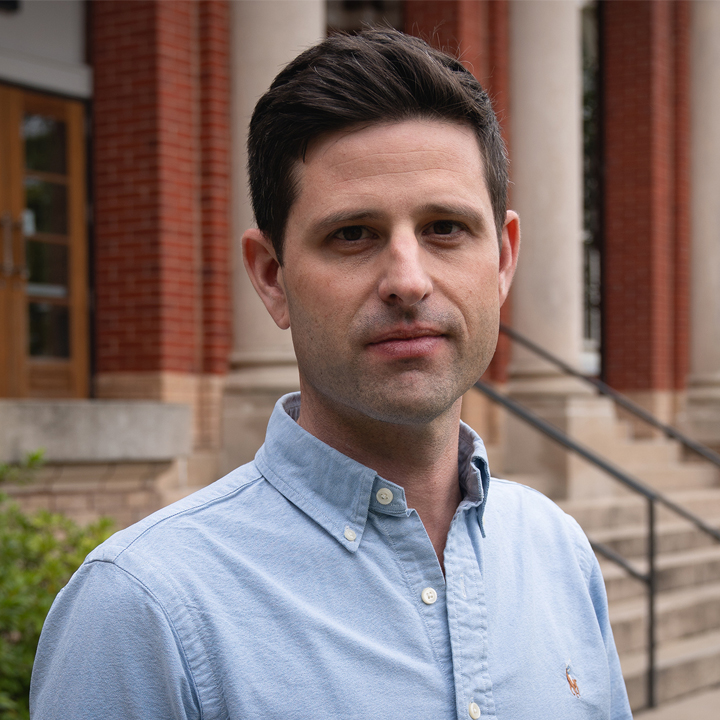

Clint Penick
Assistant Professor (Insect Ecology)
Entomology & Plant Pathology
(334) 844-5098
czp0134@auburn.edu
Get In Touch
Address:
350 S. College St.
Auburn Univ, AL 36849
Biography
EDUCATION
- Ph.D. – Arizona State University, Biology, 2012
- B.S. – Florida State University, Biology, 2005
PROFESSIONAL EXPERIENCE
- Assistant Professor – Auburn University, Entomology & Plant Pathology, 2023-present
- Assistant Professor – Kennesaw State University, Ecology, Evolution & Organismal Biology, 2019-2023
- Assistant Research Professor –Arizona State University, Biomimicry Center, 2017-2019
- Postdoctoral Research Associate – NC State University, Applied Ecology, 2013-2017
Research
RESEARCH
Urban Ecology | Climate Change | Social Evolution | Biodiversity
Research in the Penick lab focuses on the evolution and ecological success of social insects. Pound for pound, social insects and humans make up the largest animal biomass on dry land and occupy nearly every terrestrial ecosystem. To understand the traits that have facilitated this success, our research takes an integrative approach that combines techniques in ecology, physiology, behavior, and evolution. We work with a broad variety of species from ecosystems that range from remote tropical forests to the sidewalks of New York City.
Courses
RECENT COURSES TAUGHT
- ENTM 3040 — General Entomology
Publications
SELECT PUBLICATIONS
- Hellenbrand JP, Penick CA (2023) Ant cuticle microsculpturing: diversity, classification, and evolution. Myrmecological News 33:123-138
- Benyus J, Dwyer J, El-Sayed S, Hayes S, Baumeister D, Penick CA (2022) Ecological performance standards for regenerative urban design. Sustainability Science 17:2631-2641
- Penick CA, Cope G, Morankar S, Mistry Y, Grishin Y, Chawla N, Bhate D (2022) The comparative approach to bio-inspired design: integrating biodiversity and biologists into the design process. Integrative and Comparative Biology 62:1153-1163 [cover article]
- Penick CA, Ghaninia M, Haight KL, Opachaloemphan C, Yan H, Reinberg D, Liebig J (2021) Reversible plasticity in brain size, behavior, and physiology characterizes caste transitions in a socially flexible ant (Harpegnathos saltator). Proceedings of the Royal Society B 288:20210141
- Penick CA, Halawani O, Pearson B, Mathews S, López-Uribe MM, Dunn RR, Smith AA (2018) External immunity in ant societies: Sociality and colony size do not predict investment in antimicrobials. Royal Society Open Science 5:171332
- Yan H, Opachaloemphan C, Mancini G, Yang H, Gallitto M, Mlejnek J, Haight K, Ghaninia M, Huo L, Perry M, Leibholz L, Slone J, Zhou X, Traficante M, Penick CA, Dolezal K, Gokhale K, Stevens K, Fetter-Pruneda I, Bonasio R, Zwiebel LJ, Berger S, Liebig J, Reinberg D, Desplan C (2017) An engineered orco mutation produces aberrant social behavior and defective neural development in ants. Cell 170:736-747
- Penick CA, Liebig J (2017) A larval ‘princess pheromone’ identifies future ant queens based on their juvenile hormone content. Animal Behaviour 128:33-40
- Penick CA, Diamond SE, Sanders NJ, Dunn RR (2017) Beyond thermal limits: Comprehensive metrics of performance identify key axes of thermal adaptation in ants. Functional Ecology 31: 1091-1100
- Penick CA, Savage AM, Dunn RR (2015) Stable isotopes reveal links between human food inputs and urban ant diets. Proceedings of the Royal Society B 282:20142608
- Penick CA, Tschinkel WR (2008) Thermoregulatory brood transport in the fire ant, Solenopsis invicta. Insectes Sociaux 55:176-182
